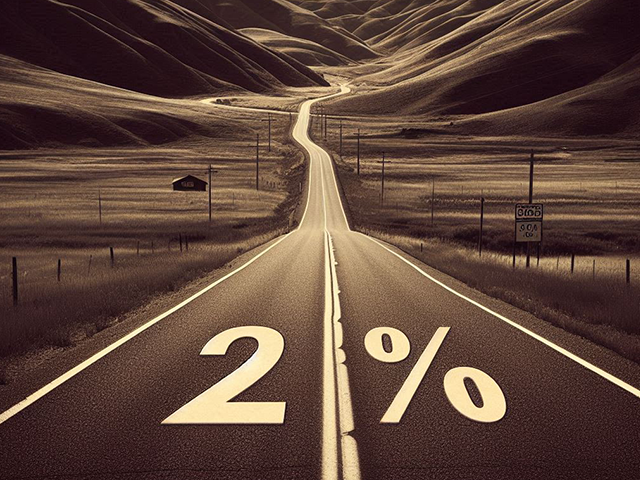The Fed’s Era of Errors
Wall Street and the Federal Reserve have been wrong about a lot of things over the last few years. And now it looks like they’re going to be wrong about how long inflation will stay high.
Our era of errors begins in 2021, when the Fed and Wall Street’s economists saw the inflationary surge as transitory. Two years later, the Fed’s economists and its own officials largely agreed with the financial sector’s view that a recession was pretty much inevitable. More recently, Fed officials projected three rate cuts this year and Wall Street forecast five—only to see those forecasts dashed by resurgent inflation in the first quarter of this year.
Currently, Federal Reserve officials, brimming with what looks like optimism to us, foresee inflation easing over the next two years, targeting a return to their coveted two percent mark by 2026. Wall Street sees this as unrealistically pessimistic and is clamoring for a rate cut as soon as possible lest the Fed “fall behind the curve.”
Driving Forces Behind Forecasts
If you peel back the flashy macroeconomic talk, what’s driving these forecasts is the idea that higher inflation was almost entirely the result of particular factors—such as fiscal excess, overly long monetary accommodation, supply chain problems, an unbalanced labor market, excess savings, and rising energy costs—that are now in the past. With these out of the way, the argument goes, inflation should just float down to the two percent target.
But these rosy outlooks face a stark reality check from Randal Verbrugge, a senior research economist at the Cleveland Fed. In a recent paper, Verbrugge argues that achieving the two percent target will likely stretch well beyond the Fed’s timeline due to inflation’s “intrinsic” stickiness. According to Verbrugge’s model, we should expect inflation to linger around 2.7 percent by mid-2025, and only marginally above 2 percent by mid-2027.
Verbrugge’s paper distinguishes between two types of forces behind persistent inflation. On the one side, there are “extrinsic” forces such as an overheated labor market or supply shocks—the sort of things the rate cut enthusiasts say are now in the rear-view mirror. On the other hand, there are “intrinsic” inflationary forces driven by how people form future expectations, set prices, and demand wages.
“One pertinent theoretical mechanism is that high inflation makes workers more likely to realize that their wage growth has not kept pace with inflation, and thus they are more likely to demand wage increases in response to recent inflation; this series of realization and demand can ignite a wage-price spiral,” Verbrugge writes (emphasis added).
Consumer Sentiment’s Role
In this context, it is useful to recall that inflation now weighs much more heavily on consumer sentiment than it did pre-pandemic, according to a recent paper by Joanne Hsu, the director of the University of Michigan’s widely-followed survey of consumers. “Even as inflation has waned, consumers continue to spontaneously comment on the negative impact of high prices on their lives,” Hsu writes.
From a traditional monetary policy view, this is not that alarming because the negative perceptions of inflation have not translated into persistently high inflation expectations. “Even as high prices, particularly gasoline and food, continue to weigh on consumers’ experiences in the economy in a way that appears unique, inflation expectations have eased through the end of 2023 in ways that are consistent with the slowdown in realized inflation,” Hsu writes.
But from the perspective of Verbrugge’s analysis, it may be the experience of inflation that matters more for inflation’s staying power than the expectations traditionally seen as important.
Right now, inflation appears to be propped up by a high level of intrinsic persistence, according to Verbrugge.
“Inflation doesn’t rapidly return to 2 percent without external or intrinsic pressures,” Verbrugge said in an interview with MarketWatch’s Vivian Lou Chen. “It trudges back, not zooms, highlighting the challenge ahead for the Fed.”
Absent some kind of extrinsic disinflationary shock—such as a productivity boom, a favorable supply shock, or a recession—it’s likely that getting inflation down all the way to two percent—”the last half-mile,” in Verbrugge’s words—is likely to take several years.

COMMENTS
Please let us know if you're having issues with commenting.